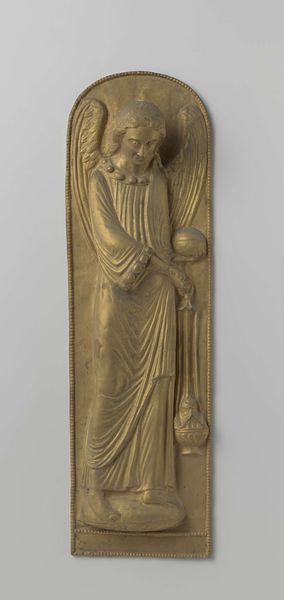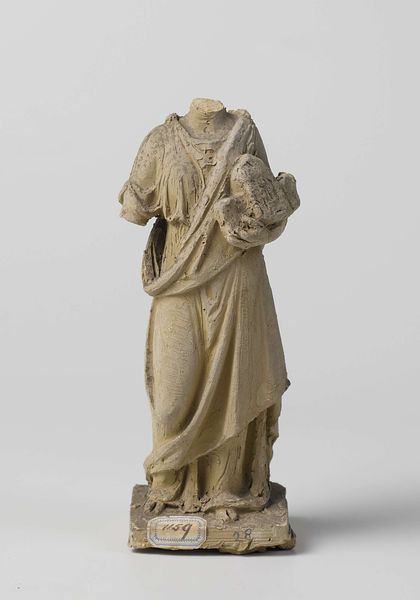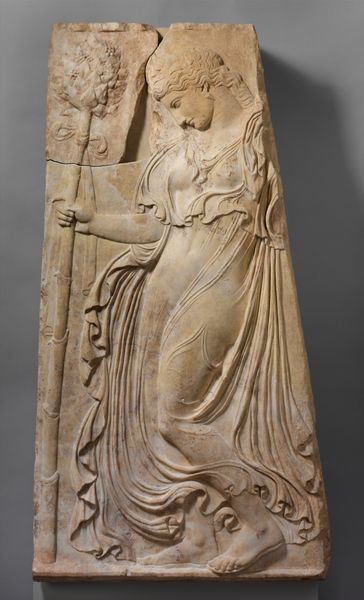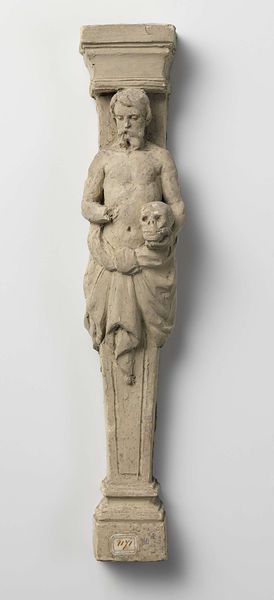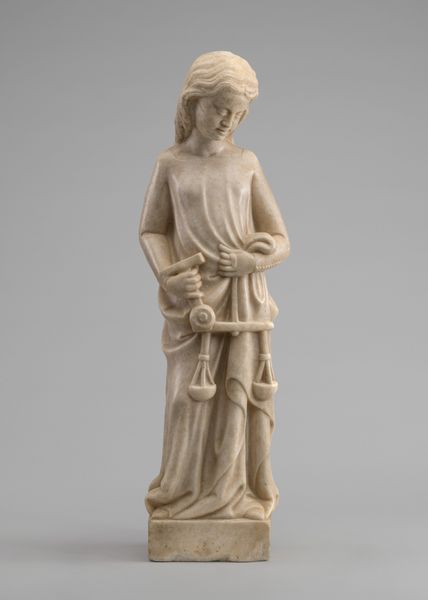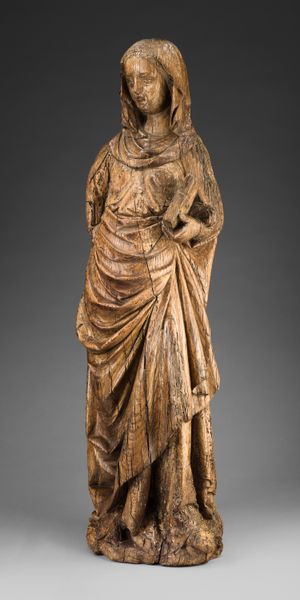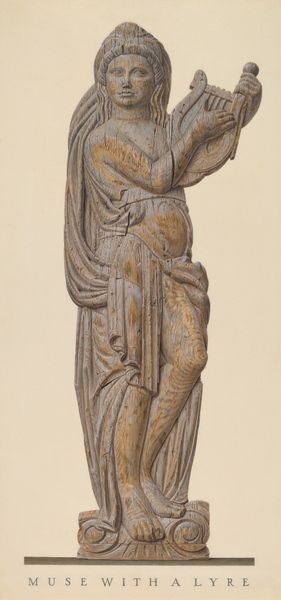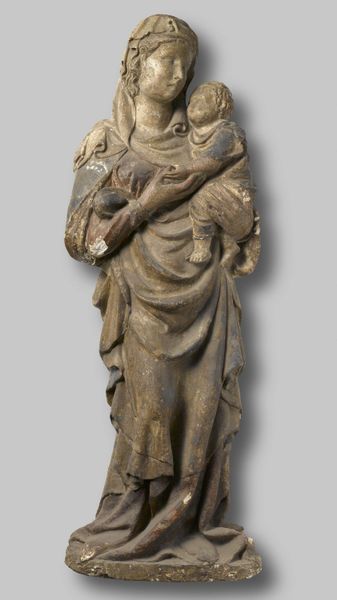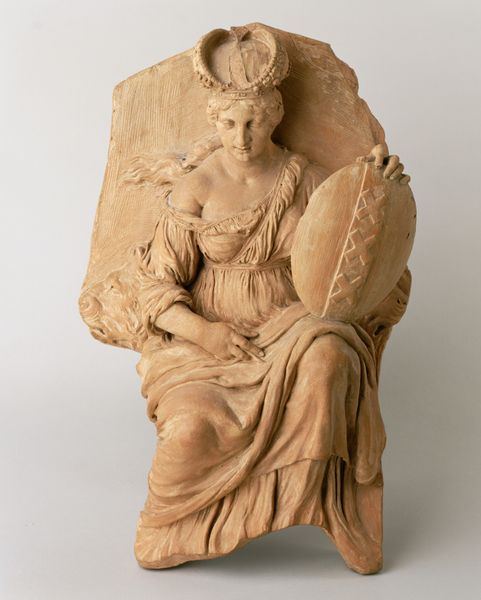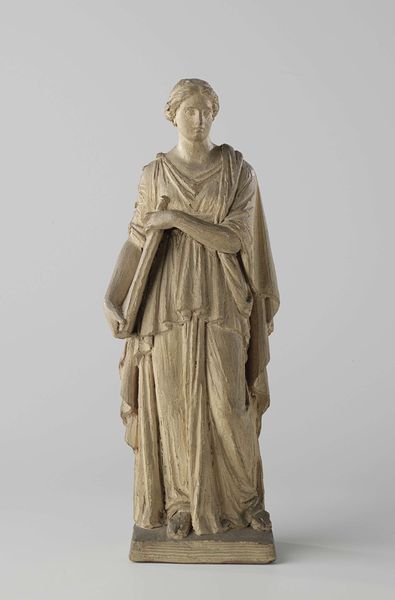
Galvanoplastische reproductie van een Engel in de schat van de St. Servaas te Maastricht c. 1838 - 1881
0:00
0:00
relief, bronze, sculpture
#
portrait
#
sculpture
#
relief
#
bronze
#
figuration
#
ancient-mediterranean
#
sculpture
#
statue
Dimensions: height 70 cm, width 20 cm
Copyright: Rijks Museum: Open Domain
Curator: This radiant relief, "Galvanoplastische reproductie van een Engel in de schat van de St. Servaas te Maastricht", created sometime between 1838 and 1881 by F. Stoltzenberg, immediately strikes me with its delicate portrayal of spiritual form. Editor: It does have a rather striking, gilded quality, almost like industrially produced gold. What are we actually seeing in terms of materials? I am interested in the process. Curator: Well, precisely that gleam tells part of the story! It's a galvanoplastic reproduction in bronze. This was a specific technique involving electrodeposition—an accessible, affordable, method that became popular in the nineteenth century and speaks to a widening interest in art beyond the elites. Editor: Right, and the mass production angle is fascinating here. This electrodeposition... Was Stoltzenberg consciously democratizing a previously exclusive image by employing it? How does this challenge notions around religious iconography and craft at the time? Curator: It certainly asks questions about authenticity and value. The original object in the treasury, whatever it may be, takes on new meaning through reproduction, becoming disseminated on a broader social scale. It alters the experience for different strata of society. Editor: So, beyond pure imitation, the material and reproductive context speak to deeper social issues... religious display and accessibility. The streamlined method suggests mass-production intentions, potentially clashing with notions surrounding revered craftsmanship. Curator: Absolutely. The bronze—easily reproducible through new technological processes, yet still associated with value and permanence—positions this angel in a fascinating dialogue between faith, industry, and the changing art market. Editor: The artist knowingly using innovative industrial process really underscores themes beyond divine serenity. It shifts this image to explore how technological innovation was altering societal perception, commodifying faith even through methods, materials and making available in unprecedented manners. It gives you pause to consider the impact this would have, socially, politically and personally for observers. Curator: Indeed, Stoltzenberg’s choice speaks volumes, doesn’t it? Editor: I agree! I come away pondering not just what is represented, but more so how it was made and consumed within 19th century industrial society, questioning how labor shaped both production and accessibility when creating works which held reverence.
Comments
No comments
Be the first to comment and join the conversation on the ultimate creative platform.
